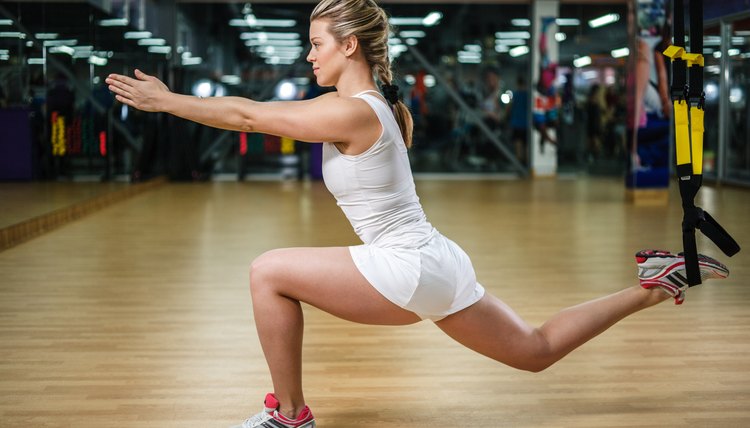What Is Specificity in Exercise?

To get results from your exercise routine, you must follow certain principles. Failure to adhere to these principles may mean you see very little benefit from your workouts. Exercise training principles are based on overload, recovery, progression, reversibility and specificity. The principle of specificity is especially important if you are exercising to achieve a particular goal such as increased strength or improved aerobic fitness.
Definition
Exercise is a form of stress. Your body adapts to the stresses you place upon it. This is the essence of specificity. Another term used in exercise science is SAID -- Specific Adaptations to Imposed Demands. This principle states your body will get better at the type of exercise you choose to do. The physiological adaptations you experience as a result of regular exercise depend on the type of exercise you perform.
Adaptations
By exercising in a particular way, you expose your body to an increased workload to which it will adapt. For example, if you lift weights regularly using heavy weights and low repetitions, your muscles will get stronger. This happens because your muscles get bigger and your nervous system becomes better able to recruit multiple motor units at the same time. Conversely, if you run long distances, your heart and lungs become more efficient and your cardiovascular endurance will improve. This results in an improved ability to take in, transport and utilize oxygen.
Exercise Selection
Seemingly similar exercises often stress your body in dissimilar ways. If you want to improve your ability to run long distances, cycling may appear to offer an alternative method of training. While cycling and running offer many similar benefits, they use your muscles in quite different ways. This means cardiovascular fitness gained through cycling will not entirely transfer to running, and improvements gained through running will not entirely transfer to cycling. The same applies to resistance training exercises. Enhancing your ability to leg press large weights will have a minimal impact in your ability to squat -- although the movement patterns are similar, they are sufficiently different that benefits from one will not exactly transfer to the other.
Movement Speed
The speed at which you perform a given movement also results in very specific adaptations. If you wanted to increase your punching speed for boxing, you might think performing heavy bench presses would help. However, because of the heavy load used in the bench press, the movement is very slow -- especially compared to throwing a punch. According to the SAID principle, lifting heavy weights slowly will result in an increased ability to lift heavy weights slowly and have minimal impact on movements such as punching speed. High-velocity medicine ball exercises such as chest presses will not result in an increased ability to bench press heavy weights despite the fact the movement patterns are quite similar.
References
- Essentials of Strength Training and Conditioning, 3rd Edition; National Strength and Conditioning Association
- Desgning Resistance Training Programs; Steven J. Fleck et al.
Writer Bio
Patrick Dale is an experienced writer who has written for a plethora of international publications. A lecturer and trainer of trainers, he is a contributor to "Ultra-FIT" magazine and has been involved in fitness for more than 22 years. He authored the books "Military Fitness", "Live Long, Live Strong" and "No Gym? No Problem!" and served in the Royal Marines for five years.
